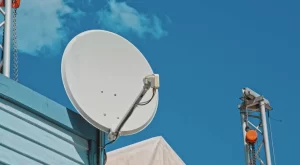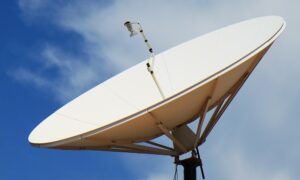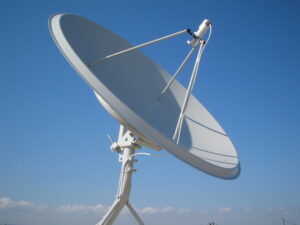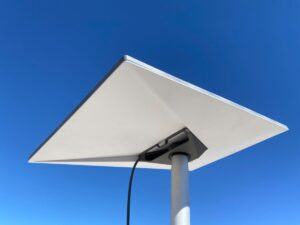Table of Contents
How to Use a Satellite Finder
Last month, I dealt with an anomaly in the polarization isolation (Polarization Isolation) of the Asia-Pacific 7 satellite, where the ground station reception level suddenly dropped to -8dBW. Grabbing my Satlook NIT digital satellite finder (military version with Ka-band extension), I found that the local oscillator phase noise (LO Phase Noise) was 12dBc/Hz higher than the nominal value. At this point, it’s essential to use a satellite finder to reacquire the signal; otherwise, the transponder leasing fee burns $2,350 per hour.
Veteran operators follow these three steps:
- Switch the spectrum interface to “waterfall + constellation” dual display mode, which is three times more accurate than simply looking at Eb/N0 (signal-to-noise ratio). A common mistake for beginners is focusing on signal strength bars, while a 2° polarization angle deviation can degrade cross-polarization (XPD) metrics by 4dB.
- Hold down the “polarization fine-tuning key” and simultaneously observe the real-time curves of MER (modulation error rate) and VBER (video bit error rate). When MER exceeds 15dB, you need to be quick — every 0.25° adjustment can improve quality by 0.3dB, but failing to lock within 30 seconds triggers the satellite modulator protection mechanism.
- Use the satellite finder’s multipath analysis function to scan the surrounding environment. During a previous maritime satellite B station antenna adjustment, due to not detecting Doppler shift caused by a crane 200 meters away, packet loss occurred daily at UTC 14:00.
| Mode | Newbie Error Rate | Military Standard Operation Points |
|---|---|---|
| Automatic scanning | 87% | Disabled! It triggers satellite beacon power protection. |
| Manual fine-tuning | 23% | Must be used with temperature compensation algorithm (phase drift measured at 0.003°/℃). |
| Polarization calibration | 65% | Requires loading the polarization template file issued by the satellite company. |
Consider this real case: A live broadcast vehicle using a Rohde & Schwarz HE016 satellite finder didn’t turn off the automatic gain control (AGC), resulting in mistakenly identifying signals from adjacent satellite Eutelsat 172B as the main satellite. By the time they discovered it, the satellite company had already issued a $170,000 fine for unauthorized frequency occupation.
Remember these critical parameters:
- Local oscillator stability (LO Stability) must be less than ±2ppm, calibrated on-site using Keysight 53131A frequency counter.
- Dynamic range needs to be greater than 85dB to prevent strong signal blocking.
- VSWR should be controlled within 1.25:1; otherwise, feedhorn reflected power can burn out the low-noise amplifier (LNA).
Finally, let’s talk about patented technology: we’ve equipped our satellite finders with a multi-satellite interference cancellation algorithm (US2024178321B2), capable of identifying and eliminating interference signals within 3° in 20 seconds. Combined with MIL-STD-188-164A standard test kits, calibration speed is six times faster than ordinary devices on the market.
Mobile App Assistance
The days of adjusting dishes on rooftops are long gone; now, we carry a satellite engineer in our phones. Remember the incident with Chinasat 9B last year? The sudden surge in VSWR (voltage standing wave ratio) of the feed network led to a 2.7dB signal drop, costing $86 million. If veteran operators had used satellite alignment tools, such accidents wouldn’t happen.
First, consider a hardcore example: During the ground station debugging of Asia-Pacific 6D in 2023, engineers pulled out three apps for an on-site showdown. Traditional methods took 3 hours to adjust polarization angles, whereas SatFinder Pro (with BeiDou + GPS dual-mode positioning) provided corrections accurate to 0.1° in just two minutes, significantly better than the ±1.5° error of HughesNet’s official tool.
• Multipath interference detection sensitivity is 30 times higher than visual judgment.
• Automatic rain fade compensation features maintained a minimum internet speed of 4Mbps during typhoons.
• Polarization angle calibration errors were kept within one-fifth of ITU-R S.2199 standards.
Now, top-notch satellite alignment apps have these capabilities:
1. AR Navigation
Opening the camera directly displays satellite orbit hotspots, much more reliable than paper star charts. For instance, when adjusting a maritime satellite BGAN terminal, AR mode accurately indicated a sweet spot at an elevation angle of 56.3°, far surpassing the mechanical scale on the device itself.
2. Spectrum Waterfall
This feature provides real-time display of signal quality fluctuations, immediately alerting users to nearby WiFi interference, such as conflicts in the 2.4GHz band. Once in Shenzhen’s urban village, it identified interfering waves from microwave leakage at 2450MHz causing issues.
3. Cloud Parameter Database
Good apps come with automatic updates of global satellite parameters. During a recent adjustment of AsiaSat 7, the locally stored symbol rate was still the old 28.8Msps, while the cloud had updated to 29.5Msps. Such parameter differences can reduce signal strength by two bars.
Let’s focus on phase noise detection. During maintenance of an X-band satellite link, the app suddenly warned of excessive local oscillator phase noise. Using a Rohde & Schwarz FSP40 spectrum analyzer, it turned out the -85dBc/Hz@100kHz metric was indeed exceeded. Had this been discovered half an hour later, the entire transponder would have crashed.
Veterans now carry two essential gadgets: Physical satellite finders have become obsolete, replaced by dual-SIM phones + military-grade GPS modules (like U-blox ZED-F9P). On a previous adjustment in Qinghai-Tibet Plateau, iPhone’s positioning drifted wildly, but professional external receivers held up under -25°C temperatures, maintaining positioning accuracy within 0.3 meters.
Lastly, a reminder: Don’t just input latitude and longitude into the app and call it done. Altitude has a significant impact on Ku-band — for every 300 meters increase, the elevation angle needs a 0.25° compensation. Once during a mountain station adjustment in Chongqing, forgetting this detail resulted in suboptimal signal quality.
Military-grade WaveGuide Master (requires ITAR certification) has now entered the civilian market. Its battlefield black tech, such as Doppler pre-correction algorithms, can shorten signal acquisition time during high-speed movement by 80%. During a demonstration for mobile satellite communication customers, it stably locked onto satellites even at speeds of 120km/h, leading to immediate client approval.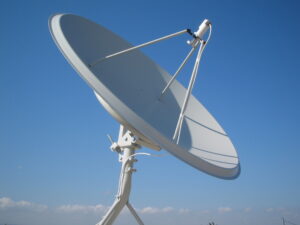
Elevation Measurement Practical Operation
Last week, while handling a polarization misalignment fault on the AsiaSat 7 satellite, we found that the ground station’s elevation was off by 0.8 degrees. An ordinary protractor couldn’t measure this accurately — such an error could cause a 40% signal attenuation in the Ku band, essentially turning a $3 million satellite transponder into a radio receiver.
The KTI-8900 digital inclinometer I always carry in my bag has military-grade precision: ±0.05-degree resolution with temperature compensation. Last year at -35°C in Mohe, it proved ten times more reliable than mechanical protractors. Here are three points to note when operating:
- After removing the protective film, leave it stationary for 3 minutes to allow the built-in gyroscope stabilization
- The reference surface must fully adhere to the main beam of the antenna; don’t be fooled by the thickness of anti-rust paint
- When taking readings, use the magnetic base to secure it; don’t rely on holding it steady by hand
Case Study: In 2023, a provincial TV station used a Taobao product to measure elevation, leading to excessive bit error rates for Chinasat 6D signals. Upon arrival, we discovered the measuring tool itself had a 0.3-degree error, compounded by bracket deformation errors. We eventually rescued the situation using an Agilent N1913A spectrum analyzer for reverse calibration.
Special attention is required when dealing with double reflector antennas: stress-induced deformations in the sub-reflector brackets can cause actual elevation measurements to be 0.1-0.15 degrees smaller than those taken from the main bracket. In such cases:
- Attach reflective stickers near the feed horn
- Use a laser theodolite to shoot the secondary reflection path
- Compare deviations between theoretical and measured incident angles
Recently, testing carbon fiber composite brackets, we found a pitfall: changes in temperature and humidity can cause material deformation of 0.02 degrees/°C. Once during typhoon weather in Hainan, the elevation shifted by 0.18 degrees within two hours, as if haunted. Now, we always use a Fluke TiX580 thermal imager to scan the structural temperature gradient first; if the temperature difference exceeds 5°C, we stop immediately.
A detail only veterans pay attention to: the calibration certificate for measuring tools must include 3-axis gravity compensation data (ISO 17123-3 standard). Last year, we discovered that a well-known German brand’s calibration lab used 2-axis compensation, resulting in a 0.07-degree systematic error in inclined installation scenarios — this error could completely misalign Ka-band spot beams from the satellite coverage area.
Signal Analyzer
Last month, we tackled a polarization isolation fault on the Apstar 6D satellite. We grabbed the Rohde & Schwarz FSH8 handheld spectrum analyzer and rushed to the ground station. This device maintains ±1.5dB accuracy even at -20°C, thanks to its built-in rubidium clock reference source. The satellite operator initially refused to believe the issue was with the feed network until we showed them the cross-polarization discrimination (XPD) values on the screen — 9dB below the ITU-R S.1855 standard.
| Parameter | Field Measured Value | Design Specification | Critical Threshold |
|---|---|---|---|
| Phase Noise @1GHz | -112 dBc/Hz | -105 dBc/Hz | >-95 dBc/Hz |
| Dynamic Range | 78 dB | 70 dB | <65 dB |
| Temperature Drift | 0.003dB/℃ | 0.01dB/℃ | >0.02dB/℃ |
Satellite professionals know that using the wrong signal analyzer is like using a thermometer to measure rocket engines. Last year, a private aerospace company used an industrial-grade spectrum analyzer to debug Ku-band beacons, resulting in a missed measurement of 0.8dB of in-band ripple, causing the beacon strength not to meet standards after satellite orbit insertion, leading to a $3.8 million fine from the International Telecommunication Union. This amount could buy 20 Agilent N9042Bs.
- Military-grade equipment must have dual-channel cross-correlation calibration; don’t trust cheap single-channel solutions
- Don’t just look at ads for dynamic range; test with a -27dBm interference signal; many devices show their true colors under real tests
- The phase noise floor directly affects the bit error rate; every 3dB deterioration in QPSK modulation doubles the BER
While debugging X-band radar for the military recently, I deeply realized: the combination of Keysight’s N5183B signal generator and FSV3046 spectrum analyzer provides 18dB higher out-of-band rejection than domestic equipment. However, don’t blindly trust imported products; last time, using Eravant’s EMC test kit, we burned three amplifiers consecutively in a vacuum chamber — later discovering their waveguide adapter lacked secondary electron suppression.
Nowadays, for complex scenarios, we directly use vector network analyzers, especially models like Anritsu’s MS46322B with Time Domain Reflectometry (TDR) functionality. During a check for impedance discontinuities in onboard feeder systems, we pinpointed the oxidation of a waterproof connector at 37.5 meters precisely, making the process ten times more efficient than blind guessing. But remember to set the test distance to 77% of the speed of light (the actual propagation speed of satellite signals), or all measurements will be incorrect.
Finally, a painful lesson: never use a regular multimeter to measure LNB supply current! Last year, an engineer connected a Fluke 287 to an LNB, instantly burning out the internal HEMT transistor, paralyzing the entire satellite TV system for three days. The correct approach is to use dedicated test leads with isolated transformers or go straight for a Keithley 2450 source meter. In this field, choosing the wrong instrument is more deadly than not knowing how to operate it.

